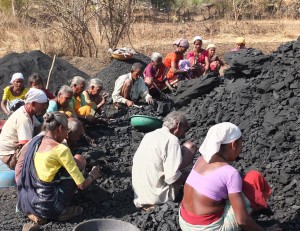Researchers Jessica Jacobson, Gillian Hunter and Amy Kirby from the Institute for Criminal Policy Research (ICPR), School of Law at Birkbeck discuss their recently completed study about the experiences of victims, witnesses and defendants at the Crown Court. Follow them: @ICPRtweet

Our study was funded by the Economic and Social Research Council. We wanted to understand what it is like to appear in court as victim, witness or defendant and what factors determine whether proceedings are seen as fair and legitimate by the participants.
We conducted fieldwork at two Crown Courts and our findings were gathered primarily through interviews with victims, defendants and witnesses, supplemented by observations of trials and sentencing hearings and interviews with court staff, judges and barristers. By these means, we assessed victims’, defendants’ and witnesses’ comprehension of court proceedings, how fair they perceived the proceedings to be, how respectfully they felt they were treated by the courts, and the significance they accorded to proceedings.
Legitimacy of the court
We tend to think of the court as a place where ‘what really happened’ is established. In fact, court proceedings are a highly ritualised process of managing conflict between alleged wrongdoers and those allegedly wronged, in which the ‘truth’ often remains unknown and unknowable.
Attending court can be terrifying, humiliating, upsetting or frustrating; and many aspects of the process can be difficult to understand. Proceedings are often characterised by an intermingling of incongruous elements and a degree of chaos. And yet, the vast majority of witnesses, victims and defendants conform with the expectations and social rules of the process. This reluctant conformity seems to reflect an implicit belief in the legitimacy of proceedings. Verdicts or sentences thought to be unfair can undermine, but tend not to erase, the perceived legitimacy of the court process.
Our work with Victim Support
The criminal justice system depends on cooperation of victims and witnesses to report crime, and to give evidence in court. How they are treated is likely to affect their confidence and trust in the system.
We describe victims’ and witnesses’ experiences of court in a report, published in July in collaboration with national victims’ charity, Victim Support. It shows the effectiveness of much existing provision for victims and witnesses in helping them feel valued and supported. This includes separate waiting areas, away from the defendant, court familiarisation visits and the Witness Service, whose staff and volunteers help explain procedures and accompany witnesses to the courtroom. Overall, witnesses reported being treated respectfully but they found aspects of the court process frustrating, confusing and distressing.
Distress and anxiety
Most were anxious about coming face-to-face with the defendant or the possibility of reprisals for giving evidence. Despite this, they tended to come to court voluntarily, citing their motivation as sense of duty to protect others from becoming victims or to secure justice for themselves or for others.
Chance encounters with defendants did occur in the entrance to the court, in the smoking areas and the canteen, and were reported as one of the most distressing aspects of the witness experience.
Waiting
Waiting characterised much of the experience: lengthy waits for the case to come to court, then while at court to give evidence and sometimes for the sentence to be delivered. Witnesses were often given little warning to attend court or, conversely, late notice that a trial had been postponed; and they were not always told of the reasons for delays.
Understanding
Some did not understand the role of prosecution barrister, and thought he or she was acting on their behalf. This coupled with limited or no contact with the prosecution barrister heightened witnesses’ feelings of marginalisation and a sense that the defendant was getting a better deal.
Most nerves were reserved for cross-examination; the formal or legal language often posed difficulties and witnesses were appreciative of judges’ interventions to ensure they understood a barrister’s questioning or to prevent hostile or aggressive questioning.
Having your ‘day in court’
There was frustration about how their testimony or their story about what happened was inhibited by rules about admissibility of evidence or by the particular focus of the prosecution case.
What needs improving?
Respectful treatment makes the difficulties of coming to court more manageable, and helps reduce any sense of marginalisation. However, there is scope for support to be enhanced; for witnesses to be better informed about court processes, and to have their voices heard more clearly.





